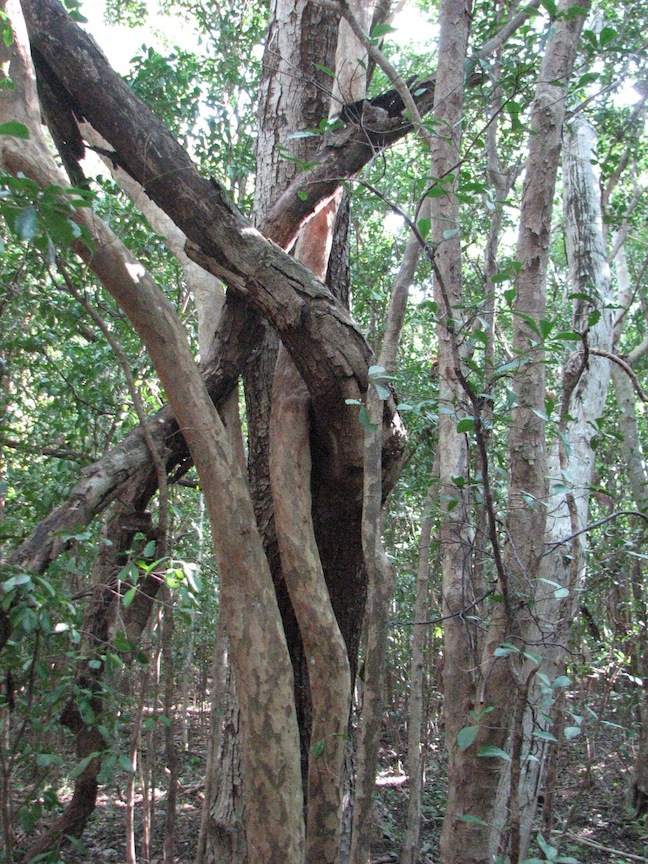
Florida's Trees
Florida landscape ecosystems | Vegetation types in Florida | Everglades | Forests
Nearly 45% of the trees in North America are native to Florida. The state is strategically positioned according to Gil Nelson, arborist and botanist, to share in the flora, or vegetation of both the temperate and tropical climate zones.
When introduced species are included Florida possesses 342 distinct species of trees. Some of these species have adapted to extreme conditions of frequent fires, occasional to frequent flooding, violent wind storms and generally poor soil conditions often characterized by sand. In addition to distinct wet and dry (winter) seasons, periodical droughts often occur. Some experts argue that, without the help of the rains that accompany hurricanes, the state would be arid or semi-arid.
Subtropcal hardwood hammock typical of the scant high ground in the Florida keys.
What a tree is can be significant:
Nelson argues that there is no universally recognized and botanically precise definition of a tree. Furthermore, despite the general type of vegetation that we think of as tall and wide in girth (distance around the trunk or stems), there are some shrubs that grow into trees in someplace, but remain bushes in other places. An example of this in sand dune areas of Florida is the Erythrina herbacea , or coral bean, which in the extremities of South Florida and Hawaii becomes a tree. This process is called arborescence, or the ability of bushes to become trees under different climatic or competitive conditions.
Generally a tree is a dilemma for purists seeking an invariable definition. Gil Nelson warns that "It is the distinction between what constitutes a shrub and what constitutes a tree that is at the heart of this definitional dilemma." (xi) The Trees of Florida, (1994).
Suffice to say that if a form of vegetation that can under some conditions possess a single stem (trunk) of more than two inches (5 centimeters) in diameter and attains a height of twelve feet ( 4 meters) may be called a "tree."
Where a tree grows is even more significant:
Where decaying vegetation accumulates for a variety of reasons sand substrate may be replaced by muck, or otherwise soil rich in humus, or nitrogen compounds needed for survival. Much of Florida is characterized by a climate with distinct dry (usually mild winter seasons) and often very wet (usually the summer rainy season) monsoon type of rainfall patterns.
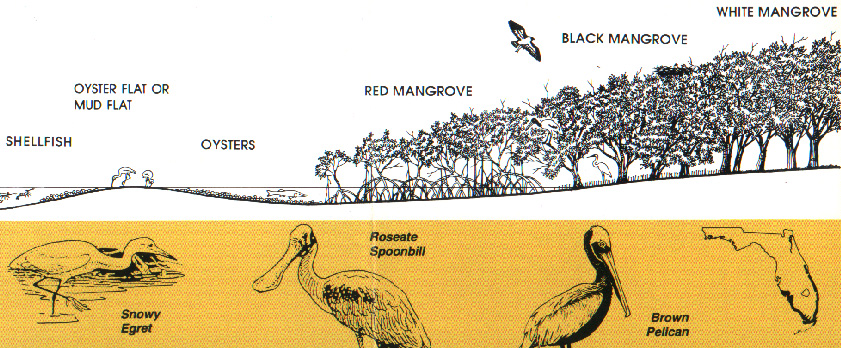
Hammock, or hammocks are the Taino Indian name taken by Spanish explorers and given to areas in the Caribbean and Florida dominated by trees, especially hardwood trees.
How a tree grows is quite extraordinary, especially in coastal Florida:
Along the maritime or salt water coastal areas of tropical Florida is found a community of trees that actually grows immersed in the brackish, fresh or marine waters of the shore. Called mangroves by the Portuguese navigators and their Spanish brethren these tropical specimens in Florida resemble those found in South America, though they are less diverse in different species than are those found along the coasts of Africa and the Indian and Pacific oceans.
Mangrove is a name applied to distinct varieties of salt-tolerant trees that are not related to one another by descent from a common ancestral stock. Instead, the Rhizophora mangle, is not related to Avicennia Geminans, which is not related to Luguncularia racemosa, which is not related to Conocarpus erectus. Together they form salt water forests of extensive range and protect the tropical (warmer) maritime coasts of Florida.
These are the four species of trees associated with estuaries
and protected 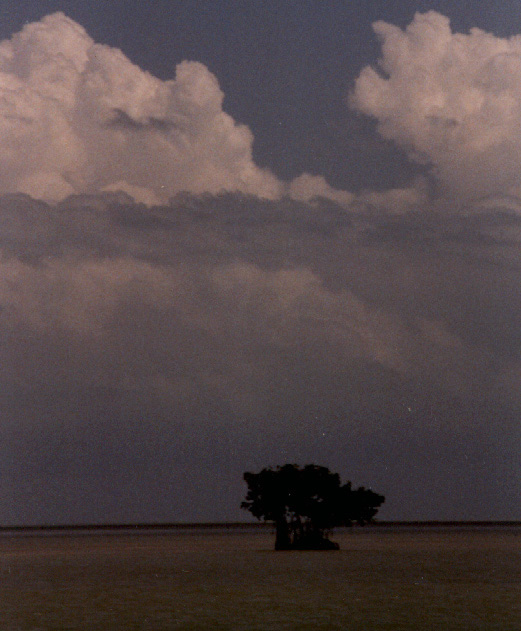 seashores
of Florida.
seashores
of Florida.
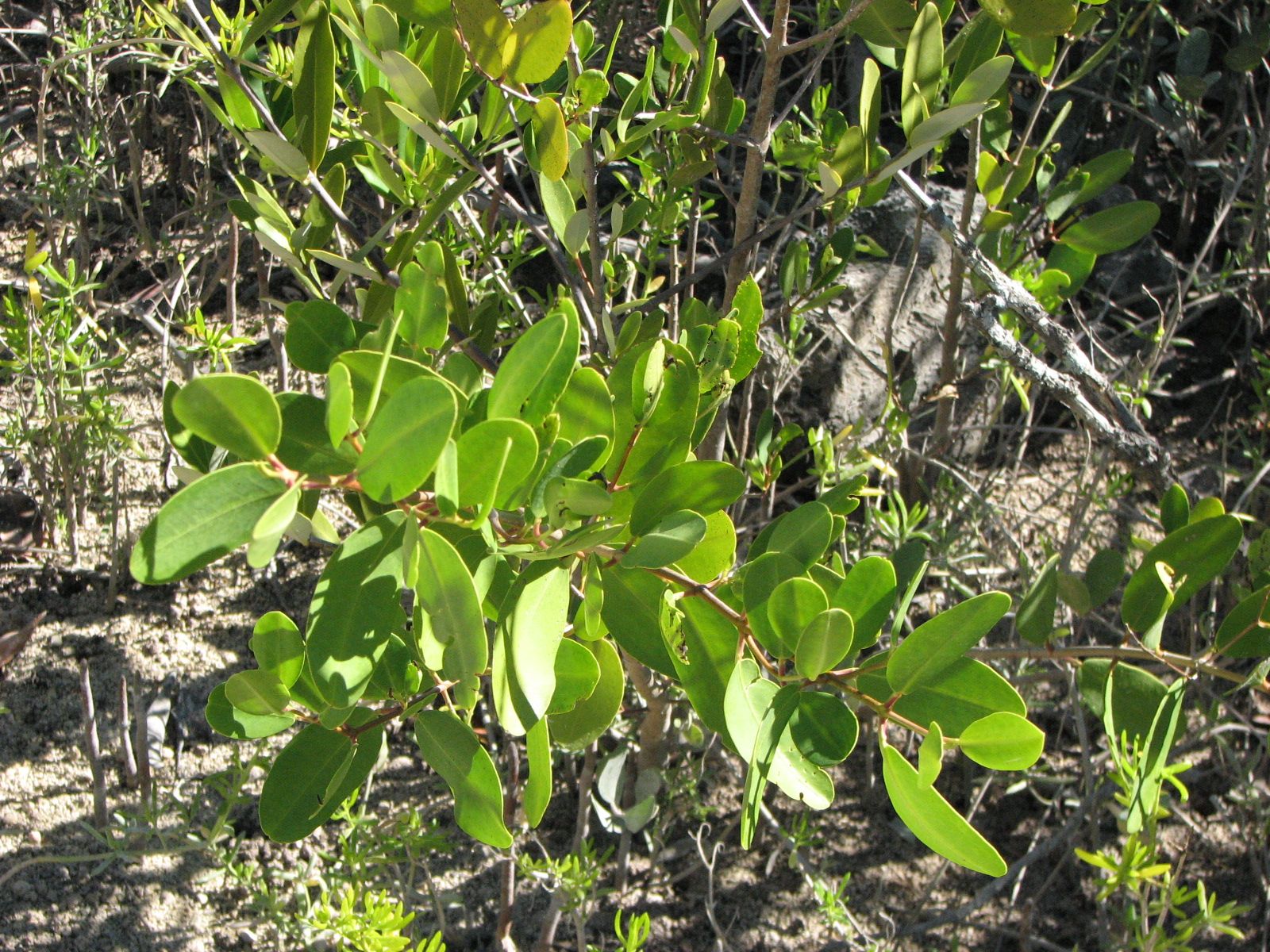 |
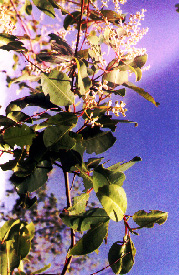 |
| Luguncularia racemosa in the tidal zone, white mangrove. | Leaves and flowers of Luguncularia racemosa. |
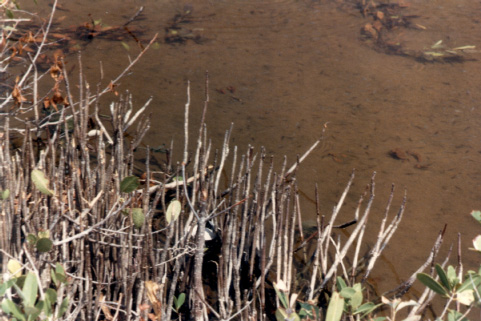 |
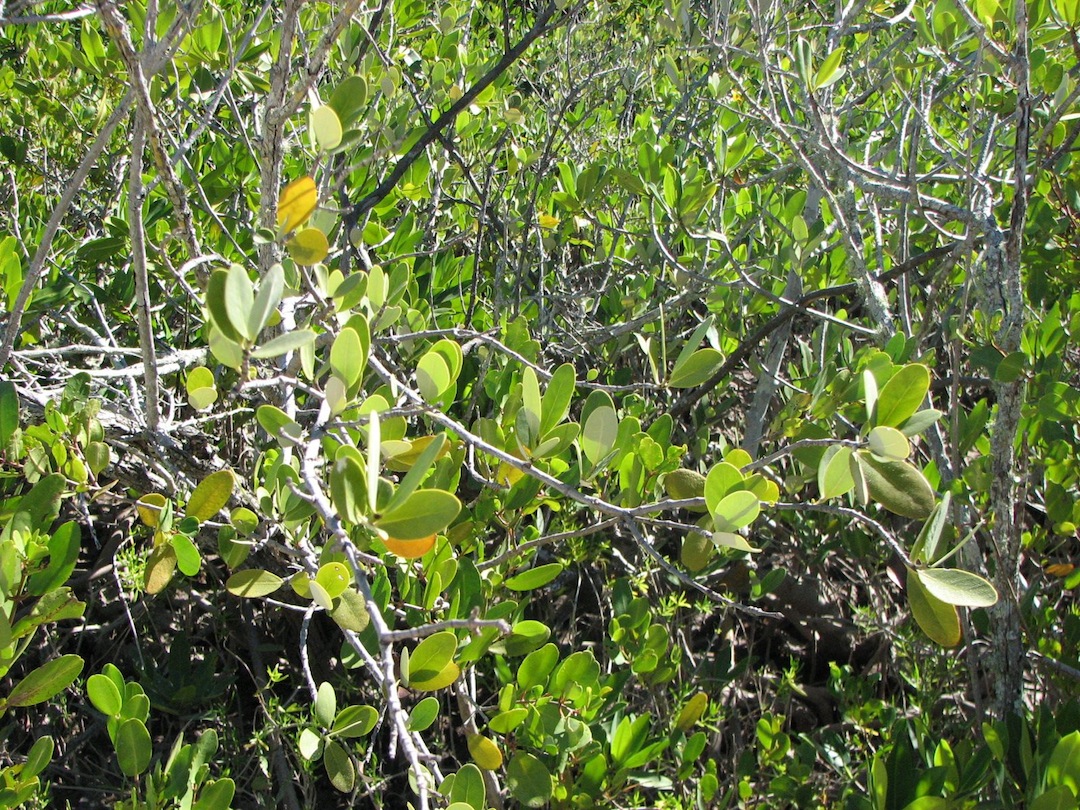 |
| The pneumatophores of the black mangrove in the tidal zone. | Leaves & stems of Avicennia Germinans, black mangroves. |
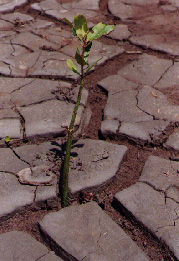 |
 |
| Rhizophora mangle,the red mangrove taking root in tidal mud flats. | Trees in the foreground are young red mangroves. |
Upland forests are often fire dependent unlike mangroves that depend on the tides.
Some obvious trees that are dominant in the landscape:
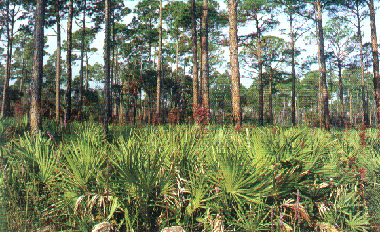 Florida pine & palmetto association of flat woods are fire tolerant.
Florida pine & palmetto association of flat woods are fire tolerant.The state tree is the Sabal Palmetto or sabal palm, called cabbage palm.
Pine trees are characteristic of dry sandy soils and tolerant of fire. Seven species are commonly native to the state. They grow in cooperation with root fungus to better extract nutrition from the otherwise nutrient poor and porous sand.
Saw palmetto or, Serenoa repens, (shown in the photograph above) grow close to the ground -tolerate fire- dominating the dry upland areas.
Cypress trees ( Taxodium distichum, Taxodium ascendens ) prefer to stand in water, but tolerate dry land near a high water table. The seeds of Taxodia trees will not however germinate underwater and require a dry period to sprout. These are among the state's most famous and easily identifiable trees
30 tree families of the Florida
Peninsula are:
1 -- Cedars, Yews and Cypress (related to the Redwoods, or Sequoia trees of the west)
2 -- The Pines
3 -- The Palms (Arecaceae, or Palmae)
4 -- Magnolias, Custard Apples, and Anise
5 -- Laurels and wild Cinnamon
6 -- Hollies, Teas and Titi
7 -- The Heath family (Ericaceae)
8 -- Sapodillas, Ebony, Horse sugar
9 -- Myrsines, Garcinias, Joewood
10 -- Tamarisks, Papaya, and Caper trees
11 -- Willows and Cottonwoods.
12 -- Mallows, Basswood and Parasol trees
13 -- Elms and Mulberries
14 -- Buckthorns
15 -- Olives, Tallowood
16 -- Lignum Vitae, Rues and Byrsonima
17 -- Gumbo Limbo, Mahogany, Bay Cedar
18 -- Bayberries, Cashews, Corckwood
19 -- Walnuts and Hickories
20 -- Maples, Buckeyes, Soapberries
21 -- Blolly, Sea Grapes and Cacti.
22 -- Beech, Oaks and Chinquapins
23 -- Witch Hazel, Sycamore and Birches
24 -- Roses and Coco-plum
25 -- Legumes
26 -- Mangroves, Baccharis, Buttonwood
27 -- Crape Myrtle, Stoppers, Guava and Tetrazygia
28 -- Madders, Bigonias, and Oleanders
29 -- Aralia, Dogwood, Honeysuckle & Tupelo
30 -- Geiger Tree, Strongbark, Fiddlewood.
University of Florida – The Institute of Food and Agricultural Sciences
Florida landscape ecosystems | Vegetation types in Florida | Everglades | Forests
Science Index | Site Analysis | Population Index | Global Warming Index | Nature Index | Home